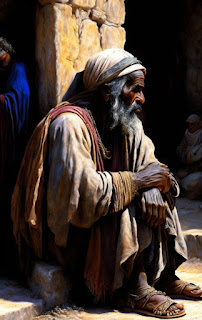John vs Those Other Guys
The Gospel of John is often considered to be the most unique of the four canonical gospels. While the synoptic gospels – Matthew, Mark, and Luke – share many similarities in terms of structure, content, and chronology, the Gospel of John stands apart in several key ways. In this article, we will explore some of the ways in which the Gospel of John is different from the synoptic gospels.
Structure and Chronology
One of the most obvious differences between the Gospel of John and the synoptic gospels is their structure and chronology. While the synoptic gospels follow a relatively similar structure and timeline, with the exception of some variations in the order of events, the Gospel of John is structured differently and focuses on a different timeline.
For example, the synoptic gospels begin with Jesus' baptism and move quickly into his ministry in Galilee, while the Gospel of John starts with a prologue that establishes Jesus' divine nature and then moves into a series of "signs" or miracles that demonstrate his power and authority.
The Gospel of John also places more emphasis on Jesus' ministry in Jerusalem, whereas the synoptic gospels focus more on his ministry in Galilee. This difference in structure and chronology is thought to reflect different audiences and theological emphases.
Content and Themes
Another major difference between the Gospel of John and the synoptic gospels is their content and themes. While the synoptic gospels focus on Jesus' teachings and actions, the Gospel of John emphasizes Jesus' identity and relationship with God.
In the Gospel of John, Jesus is portrayed as the Word made flesh, the Son of God who has come to reveal the Father to the world. This emphasis on Jesus' divinity and his relationship with God sets the Gospel of John apart from the synoptic gospels, which focus more on Jesus' teachings and his role as a teacher and prophet.
Additionally, the Gospel of John emphasizes the importance of belief in Jesus as the Son of God and the source of eternal life. This emphasis on belief is a recurring theme throughout the Gospel of John and is not as prominent in the synoptic gospels.
Literary Style
Finally, the Gospel of John is notable for its distinctive literary style. Unlike the synoptic gospels, which
use a more straightforward narrative style, the Gospel of John employs complex literary devices such as symbolism, metaphor, and irony.
For example, in the Gospel of John, Jesus frequently speaks in metaphorical language, such as when he refers to himself as the "bread of life" or the "vine." These metaphors are used to convey deeper theological truths about Jesus' identity and mission.
Additionally, the Gospel of John is full of irony and wordplay, such as when Jesus speaks of being "lifted up" on the cross, which is both a reference to his crucifixion and his exaltation as the Son of God.
In summary, the Gospel of John is different from the synoptic gospels in several key ways. Its structure and chronology, content and themes, and literary style all set it apart as a unique and distinctive gospel that offers a different perspective on Jesus and his mission. While these differences may sometimes cause confusion or disagreement among scholars and readers, they also offer rich opportunities for exploration and reflection on the meaning and significance of the gospel message.





Comments
Post a Comment